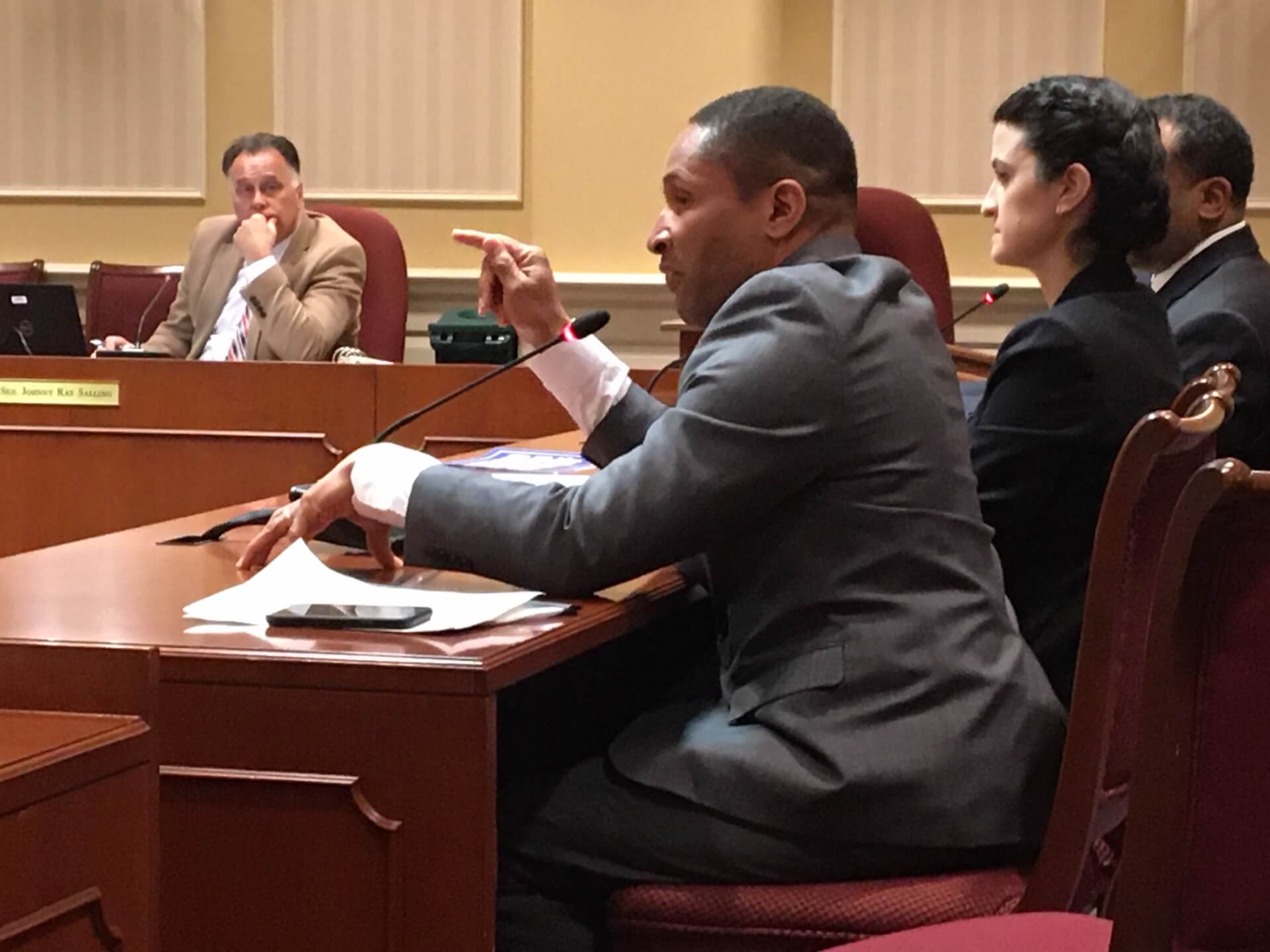Lawmaker: MDOT Treats Southern Md. ‘Like a Toilet’

State lawmakers and local officials from Southern Maryland served notice on Thursday that they intend to launch a full court press to bring commuter rail to Charles, Calvert and St. Mary’s counties — even if it means raiding transportation funds already earmarked for projects in other parts of the state.
The officials were led by Sen. Arthur Ellis (D-Charles), who has introduced legislation that would provide $27 million to jump-start light rail service along the MD Route 5 corridor.
In testimony before the Senate Budget and Taxation Committee, Ellis, who grew up in New York City, said the state Department of Transportation’s attitude toward Southern Maryland reminded him of President Ford’s rejection of bailout aid the city requested during its 1970s bankruptcy crisis.
That response generated one of the most memorable newspaper headlines of all time, in The Daily News: “Ford to City: Drop Dead.”
“We have the worst commute in the nation,” Ellis told the panel, referencing a 2019 analysis by Bloomberg.
“This project is number 36 on their list of 38 priorities. They’re telling us to drop dead,” said Ellis, banging the desk for emphasis. “The worst commute in the nation, on average two hours a day, one way, and the state of Maryland is ignoring that.”
Ellis met on Thursday with Andrew Cassilly, a former Republican state delegate who was recently named a senior adviser to Gov. Lawrence J. Hogan Jr. (R), to press his case.
In an interview after the meeting, the lawmaker said, “The state is treating Southern Maryland as a toilet. You flush and you forget about it. Low priority. … It’s unacceptable.”
Rail from Southern Maryland toward the Capital Beltway has been discussed for decades. It’s been the subject of five separate studies, officials said.
Planners envision an 18-mile line running largely along the MD 5 right-of-way from White Plains to the Branch Avenue Metro Station in Prince George’s County.
They believe the line would benefit the estimated three-quarters of Southern Maryland commuters who travel to jobs in Prince George’s, Northern Virginia and Washington, D.C., each day.
Commutes of 90 minutes are more are common, drives which take parents away from children for long periods and prevent low-income people from getting a second job.
Ellis’ bill would require MDOT to spend $12 million in fiscal year 2022 and $15 million in FY 2023 on environmental studies essential to the project advancing.
Sen. Thomas V. Mike Miller Jr. (D-Calvert), a new member of the Budget and Tax panel, said he supports the general concept — but he said Ellis’ approach would take money already allocated to other projects.
“This doesn’t create any new money,” the former Senate president said. “I can’t support taking money from Baltimore or Anne Arundel that are already first in the pipeline.”
That drew an angry retort from Ellis, who said, “this goes back to that ‘drop dead’ attitude.”
State officials echo Miller’s concern. They noted that Ellis’ bill would circumvent the rolling six-year Consolidated Transportation Program, a process by which local priorities qualify for funding. They also noted that, since Hogan became governor, the state has advanced several big-ticket projects in Southern Maryland.
[Transportation projects in Calvert County]
[Transportation projects in Charles County]
[Transportation projects in St. Mary’s County]
Prince George’s County leaders voted this week to endorse Southern Maryland’s push for commuter rail.
“There really is no other answer,” said County Council member Mel Franklin (D). “If it’s not this project, what’s the answer for the crushing transportation problem of Southern Maryland?”
Some leaders have suggested that a bus rapid transit system running up the median of Route 5 would offer commuters the opportunity to leave their cars at home without the expense of a rail line.
But Jason Groth, Charles County’s Director of Planning, said BRT buses can’t run frequently enough — nor could bus platforms be made long enough — to handle the expected ridership. He also said BRT has higher expenses than rail once the system begins operating.
“This project is primed and ready to move forward,” said Gary V. Hodge, a transportation advocate and former chairman of the Tri-County Commission in Southern Maryland. “Thirty-one years of waiting is long enough. Our people are suffering and they’re waiting for the cavalry to arrive.”




 Creative Commons Attribution
Creative Commons Attribution